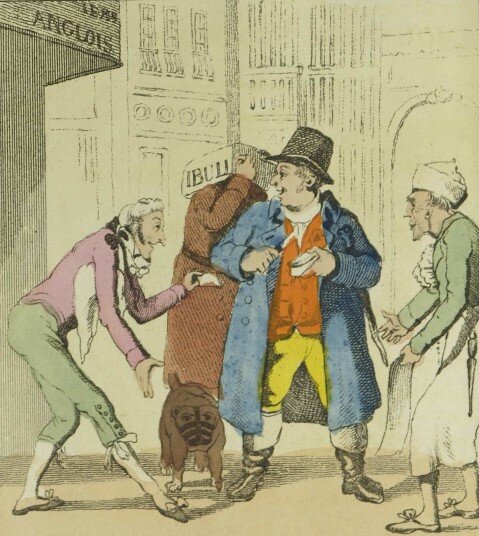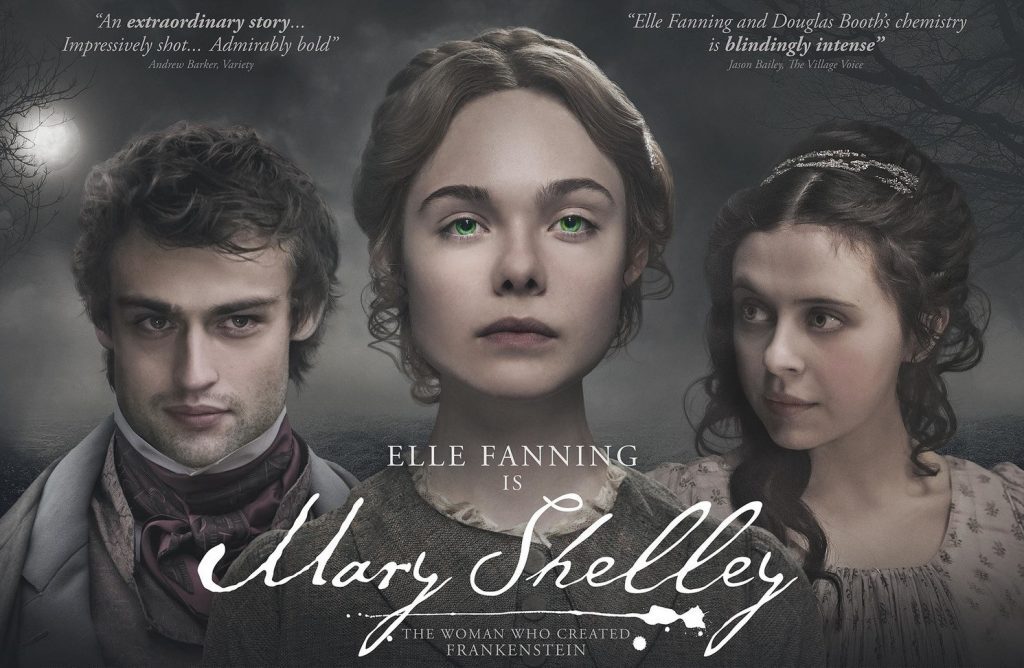Growing Up in a Literary Household
Born in London, England on August 30, 1797, as Mary Wollstonecraft Godwin–Mary was the daughter of famed feminist Wollstonecraft as well as the philosopher and political writer William Godwin. Her mother Mary Wollstonecraft authored The Vindication of the Rights of Woman in 1792, but she died shortly after Shelley was born, and consequently, they were never able to develop a relationship.
There is some warrant for seeing Mary Shelley as a reflection of her parents, for both mother and father were extraordinary. Her mother, Mary Wollstonecraft, published the classic manifesto of sexual equality, A Vindication of the Rights of Woman (1792). Her father, William Godwin, established his preeminence in radical British political thought with his Enquiry Concerning Political Justice (1793) and won a permanent place in literary history with his novel Caleb Williams (1794), often considered the first English detective novel. The toast of radical social circles, the two were bound to meet. When they did, in the summer of 1796, an immediate mutual attraction began, and they were married on 29 March 1797. On 30 August of that year Mary Wollstonecraft Godwin was born. Complications from her birth resulted in her mother’s death 10 September.
Shelley and her older, half-sister Fanny Imlay (a child her mother had through an affair with a soldier), were raised by Shelley’s father William Godwin until he remarried in 1801. Shelley’s stepmother brought two of her own children into the marriage and she and Godwin would later have a son together. Although she provided Shelley with a mother figure, they were never exactly fond of each other–Mary Jane Clairmont would end up sending her own two daughters away to school, but decided that Shelley had no need of a formal education. Despite Mary Shelley’s lack of a true formal education, she educated herself through her father’s own extensive library and she could often be found reading by her mother’s grave.
As a child, I scribbled; and my favourite pastime, during the hours given me for recreation, was to ‘write stories’.
Mary Shelly in The Life and Letters of Mary Wollstonecraft
Her First Publication
The Godwin household was no stranger to many distinguished people of the time, their household visitors included Samuel Taylor Coleridge and William Wordsworth; it’s no surprise that Shelley found a creative outlet in writing, as her escape from her often overtly challenging life at home was being able to delve into her imagination through daydreaming. Her first publication was a poem called, Mounseer Nongtongpaw; or The Discoveries of John Bull in a Trip to Paris which was made official through her father’s publishing company in 1807–stunningly showing her prowess as a writer at the young age of ten.
Mounseer Nongtongpaw; or The Discoveries of John Bull in a Trip to Paris

John Bull, from England’s happy Isle,
Too Bold to dread mischance,
Resolv’d to leave his friends awhile,
And take a peep at France.
He nothing knew of French indeed,
And deem’d it jabb’ring stuff,
For English he could write and read,
And thought it quite enough.
Shrewd John to see, and not to prate,
To foreign parts would roam,
That he their wonders might relate,
When snug again at home.
Arriv’d at Paris with his dog,
Which he for safety muzzled,
The French flock’d round him, all agog,
And much poor John was puzzled.
The rest of the poem can be found at wikisource.org, as it is a work within the public domain.
Mounseer Nongtongpaw; or, The Discoveries of John Bull in a Trip to Paris
How a Teenager Changed the Literary World
Just five years after she published her first poem, during the summer of 1812, Mary blossomed into a young woman–one who resembled her late mother far too much for her step-mother to bear. It was for this reason that Mary Jane Godwin, Shelley’s step-mother, forced her to travel to Scotland to stay with an acquaintance of her father–William Baxter and his family. It was during this stay with Baxter’s family, that she found a sort of serenity in the daily domestic lifestyle and she returned the following year to recapture the bliss she had captured the year before. The two years in Scotland may have nurtured Mary’s literary imagination, but it also further isolated her from her much-loved father.
They were my eyry of freedom, and the pleasant region where unheeded I could commune with the creatures of my fancy. I wrote then—but in a most common-place style. It was beneath the trees belonging to our house, or on the bleak sides of the woodless mountains near, that my true compositions, the airy flights of my imagination, were born and fostered.
Preface to the single-volume, Standard Novels edition of Frankenstein in 1831
A Scandalous Affair & the Birth of a Monster
In 1814, Percy Bysshe Shelley, a poet under the tutelage of Mary’s father, but soon focused his attentions solely on Mary. She soon began a relationship with the still-married Percy Shelley; when she was nearly seventeen years old, the two ran off to England together, along with Mary’s stepsister Jane. Despite the close relationship she had with her father, Mary’s actions alienated her from them, who would go a long time before speaking to her again. The couple traveled through Europe for quite a time, struggling financially and facing the loss of their first child–a baby girl, who lived only for a few days–in 1815.
The summer of 1816, Mary and Percy were in Switzerland with Jane Clairmont, Lord Byron, and John Polidori–the story goes that the group were entertaining themselves on a tumultuously rainy day by reading ghost stories. It was this day that Lord Byron suggested that they make a game out of each creating their own horror story and see who could come up with the best one. This is how Mary began her work on what would become her most renowned novel, Frankenstein, or the Modern Prometheus–so in many ways, when Mary began to write this infamous tale, she was showing off to what she considered her peers in the literary community.
Two Suicides & A Wedding
Late in 1816, Mary’s half-sister Fanny Imlay committed suicide and a short time later, Percy Shelley’s first wife also committed suicide by drowning herself. Instead of taking this time to mourn, Mary and Percy Shelley seized the opportunity to officially marry one another in December 1816. During their escapades in Europe, Mary Shelley published a travelogue entitled History of a Six Weeks’ Tour (1817), while continuing to work on the monster tale that she had begun in Switzerland.
When she finished her famous monster story, Frankenstein, or the Modern Prometheus, she did so anonymously in 1818. Since Percy Shelley wrote the introduction to the book, it was mistakenly believed that he was the author of the book, but as the novel continued to be a huge success, the Shelleys moved to Italy and Mary devoted herself heavily to her marriage which was rife with infidelity and heartache. Two more of the children that Mary birthed died and the only child they bore that survived to adulthood, Percy Florence Shelley, came about in 1819.
Later Years
The most devastating tragedy that affected Mary was when her husband drowned in a boating accident with a friend in the Gulf of Spezia, in 1822. She was made a widow at the young age of 24, but she continued to work diligently to support herself and her son. Despite having lived a full, scandalous and tragic life before she was even a quarter of a century old, Mary didn’t give up. After her husband died, she wrote several more novels, including Valperga (1823), as well as another science fiction tale The Last Man (1826). A devoted wife, even after her husband passed, she continued to promote his poetry to preserve his place in literary history, despite facing opposition from Percy’s father who had always disapproved of his son’s unorthodox lifestyle.
Death
Shelley continued to live until the age of 53–she passed away on February 1, 1851 from aggressive brain cancer and was buried at St. Peter’s Church in Bournemouth with the remains of her late husband’s cremated remains. Shortly after her death, her son Percy and daughter-in-law Jane had Shelley’s parents exhumed from St. Pancras Cemetery in London and had them place next to Mary Shelley within their family tomb.
Fact or Fiction?
Sometimes the truth is stranger than fiction, but considering the traditions we maintain to this day–keeping cremated remains in urns on our mantles, as one example–what we know about what Mary did is actually not all that strange! After Percy Shelley’s remains were recovered from his boating accident, his remains were cremated–oddly enough, his heart refused to burn and it is speculated that this was due to a disease which slowly calcified his heart. Instead of burying Percy’s heart along with the rest of his cremated remains, she kept it as a valuable possession in a silken shroud and carried it with her wherever she went. It wasn’t until a year after her death that Percy’s petrified heart was found wrapped in the pages of one of his last poems Adonais. It was eventually buried in the family vault with their son, Percy Florence Shelley when he died in 1889. It was wrapped in the pages of one of his last poems, Adonais. The heart was eventually buried in the family vault with their son, Percy Florence Shelley, when he died in 1889.
Mary Shelley (2017)

With the recent trend of classical authors having their tales told, it was about damn time that Shelley got the credit she deserved. Somehow it still took well over a century and a half for Shelley to be recognized on the big screen in a biographical sense, although the movie is rife with inconsistencies comparatively with how she has been historically represented. If taken at face value, however, it is an excellent movie–we highly recommend it if you’re a fan of Shelley at all–it is not at all within the genre of horror, despite her status as the famed mother of sci-fi horror fiction.
Index of Sources
- www.biography.com/writer/mary-shelley
- www.bl.uk/people/mary-shelley
- www.poetryfoundation.org/poets/mary-wollstonecraft-shelley
- www.newyorker.com/magazine/2018/02/12/the-strange-and-twisted-life-of-frankenstein
- lithub.com/the-treacherous-start-to-mary-and-percy-shelleys-marriage/
- people.brandeis.edu/~teuber/shelleybio.html

Georgia-based author and artist, Mary has been a horror aficionado since the mid-2000s. Originally a hobby artist and writer, she found her niche in the horror industry in late 2019 and hasn’t looked back since. Mary’s evolution into a horror expert allowed her to express herself truly for the first time in her life. Now, she prides herself on indulging in the stuff of nightmares.
Mary also moonlights as a content creator across multiple social media platforms—breaking down horror tropes on YouTube, as well as playing horror games and broadcasting live digital art sessions on Twitch.
